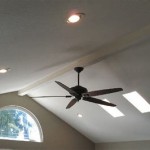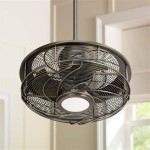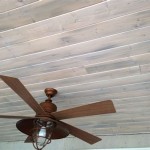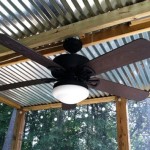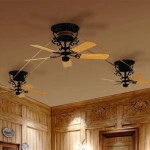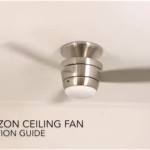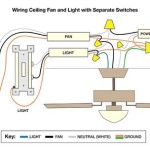How to Remove Popcorn Ceilings With Asbestos: A Comprehensive Guide
Popcorn ceilings, also known as acoustic ceilings, were a popular choice in residential construction from the 1950s through the 1980s. The textured surface effectively masked imperfections and offered sound-dampening qualities. However, many of these ceilings contained asbestos, a naturally occurring mineral fiber known for its heat resistance and insulating properties. While asbestos-containing materials (ACMs) are generally safe when undisturbed, they pose a significant health risk when fibers become airborne, as can happen during renovation or removal.
Removing a popcorn ceiling that potentially contains asbestos is a serious undertaking. Improper handling can release asbestos fibers into the air, leading to severe respiratory illnesses such as asbestosis, lung cancer, and mesothelioma. Therefore, a methodical approach is crucial, prioritizing safety and adherence to regulatory guidelines. This article provides a comprehensive guide to removing popcorn ceilings suspected of containing asbestos, emphasizing the importance of professional assessment and safe removal practices.
1. Asbestos Testing and Identification
Before initiating any removal process, the most critical step is to determine whether the popcorn ceiling contains asbestos. Visual identification is insufficient, as asbestos fibers are microscopic. The only reliable method is to have a sample of the ceiling material tested by a certified asbestos testing laboratory. These laboratories follow strict protocols to analyze the sample and provide a definitive answer regarding the presence and percentage of asbestos.
To obtain a sample, carefully scrape away a small amount of the popcorn texture from an inconspicuous area. Use a wet wipe to dampen the area first to minimize dust generation. Double-bag the sample in resealable plastic bags and label it clearly with the date, location, and a description of the sample. Send the sample to a National Voluntary Laboratory Accreditation Program (NVLAP)-accredited laboratory for analysis. This ensures the lab meets specific quality standards and provides reliable testing results.
If the test results confirm the presence of asbestos, it's imperative to understand the regulatory requirements in the specific jurisdiction. Many regions have strict regulations regarding the handling, removal, and disposal of ACMs. These regulations are in place to protect both the individuals performing the removal and the general public. Ignoring these regulations can lead to significant fines and legal repercussions.
The test results will also help determine the appropriate removal method. If the asbestos content is low (typically less than 1%), the regulations might be less stringent than if the asbestos content is higher. However, even low levels of asbestos require careful handling to prevent fiber release.
2. Professional Asbestos Abatement vs. DIY Removal
The decision of whether to hire a professional asbestos abatement contractor versus attempting a DIY removal is a critical one that should be based on several factors, including the asbestos content, the size of the affected area, and the homeowner’s experience with hazardous material handling. Generally, it is strongly recommended to hire a licensed and certified asbestos abatement professional for any asbestos removal project.
Professional asbestos abatement contractors have undergone extensive training and possess the necessary equipment and expertise to safely remove ACMs. They are knowledgeable about local, state, and federal regulations regarding asbestos handling and disposal. These professionals will develop a comprehensive abatement plan, which typically includes containment procedures, negative air pressure systems, personal protective equipment (PPE), and proper disposal methods.
Containment is a critical aspect of asbestos abatement. Professionals will typically seal off the work area with polyethylene sheeting to prevent asbestos fibers from spreading to other parts of the building. A negative air pressure system is then used to create a constant airflow pulling air out of the containment area and through a HEPA (High-Efficiency Particulate Air) filter. This ensures that any released asbestos fibers are captured and prevented from escaping.
DIY removal of asbestos-containing popcorn ceilings is strongly discouraged, particularly for individuals without prior experience in handling hazardous materials. The risk of accidental asbestos fiber release is high, potentially exposing the homeowner and their family to serious health risks. Furthermore, improper disposal of asbestos-containing waste can lead to environmental contamination and potential legal consequences.
If the decision is made to proceed with DIY removal despite the risks, it is absolutely essential to consult with local authorities and familiarize oneself with all applicable regulations. Acquiring the proper PPE, including a respirator with HEPA filters, disposable coveralls, gloves, and eye protection, is non-negotiable. Implementing thorough containment procedures and using a HEPA-filtered vacuum cleaner are also crucial to minimize fiber release.
3. Safe Removal Procedures: A Step-by-Step Guide
Regardless of whether the removal is performed by a professional or a homeowner (against recommendation), the following steps outline the general procedures for safely removing a popcorn ceiling suspected of containing asbestos. It is reiterated that DIY removal is strongly discouraged due to the inherent risks.
Preparation and Containment: Clear the room of all furniture and belongings. Cover the floor with heavy-duty plastic sheeting and seal the edges with duct tape. Seal off all doorways and windows with plastic sheeting to create a contained work area. Turn off the heating, ventilation, and air conditioning (HVAC) system to prevent the spread of asbestos fibers through the ductwork.
Personal Protective Equipment (PPE): Wear a properly fitted respirator with HEPA filters that have been NIOSH (National Institute for Occupational Safety and Health) approved for asbestos removal. Wear disposable coveralls with a hood, gloves, and eye protection. These protective measures are crucial to prevent inhalation and skin contact with asbestos fibers.
Wetting the Ceiling: Use a garden sprayer to thoroughly wet the popcorn ceiling with water. Adding a small amount of dish soap to the water can help it penetrate the texture more effectively. Wetting the ceiling helps to encapsulate the asbestos fibers and prevent them from becoming airborne during removal. It is crucial to keep the ceiling consistently damp throughout the removal process.
Scraping the Texture: Use a wide drywall knife or scraper to carefully scrape the wetted popcorn texture from the ceiling. Apply gentle pressure to avoid gouging the underlying drywall. Work in small sections to minimize dust generation. Collect the scraped material in a heavy-duty plastic bag lined with two layers of plastic. Seal the bags tightly with duct tape.
Cleaning and Disposal: After removing all the popcorn texture, thoroughly clean the work area with a HEPA-filtered vacuum cleaner. Wipe down all surfaces with a damp cloth to remove any residual dust. Dispose of the waste bags according to local, state, and federal regulations for asbestos disposal. Typically, this involves taking the waste to a designated landfill or hazardous waste disposal facility.
Final Inspection: After the removal and cleaning process, have the work area inspected by a certified asbestos inspector to ensure that all asbestos fibers have been removed. Air sampling may be required to verify that the air is free of asbestos fibers before the area is deemed safe for occupancy.
Post-Removal Procedures: Once the area has been cleared and certified safe, the next step is to consider retexturing or finishing the ceiling. This can involve applying a new texture, plastering, or installing drywall. When choosing a new ceiling finish, consider factors such as aesthetics, soundproofing, and ease of maintenance.
Regardless of the finishing choice, it is important to ensure that the new material is applied properly to prevent any future issues. If drywall is being installed, ensure that the seams are properly taped and finished. If a texture is being applied, ensure that it is applied evenly and consistently. Proper preparation and application are essential for a long-lasting and aesthetically pleasing ceiling finish.
In summary, removing a popcorn ceiling that may contain asbestos is a complex and potentially hazardous undertaking. Prioritizing safety through proper testing, professional abatement (strongly recommended), and meticulous adherence to established procedures is paramount to protecting both the individual performing the work and the surrounding environment. Neglecting these precautions can have severe and long-lasting health consequences.

How To Remove Popcorn Ceilings And When You Should Call A Professional The Seattle Times

How Can You Tell If Your Popcorn Ceiling Has Asbestos
How To Properly Remove Asbestos Containing Spray On Textured Ceilings For Home Owners
Home Help How To Scrape Off Ceiling Popcorn Update Your

Asbestos In Popcorn Ceilings Removal Testing And Safety

The Joy Of Popcorn Ceiling Removal Centsational Style

Asbestos In Popcorn Ceilings Is Your Family At Risk

Diy Asbestos Removal Kit Popcorn Ceiling

How To Remove A Popcorn Ceiling Master Building Materials Blog

How To Remove A Popcorn Ceiling The Inspector Blog
Related Posts

